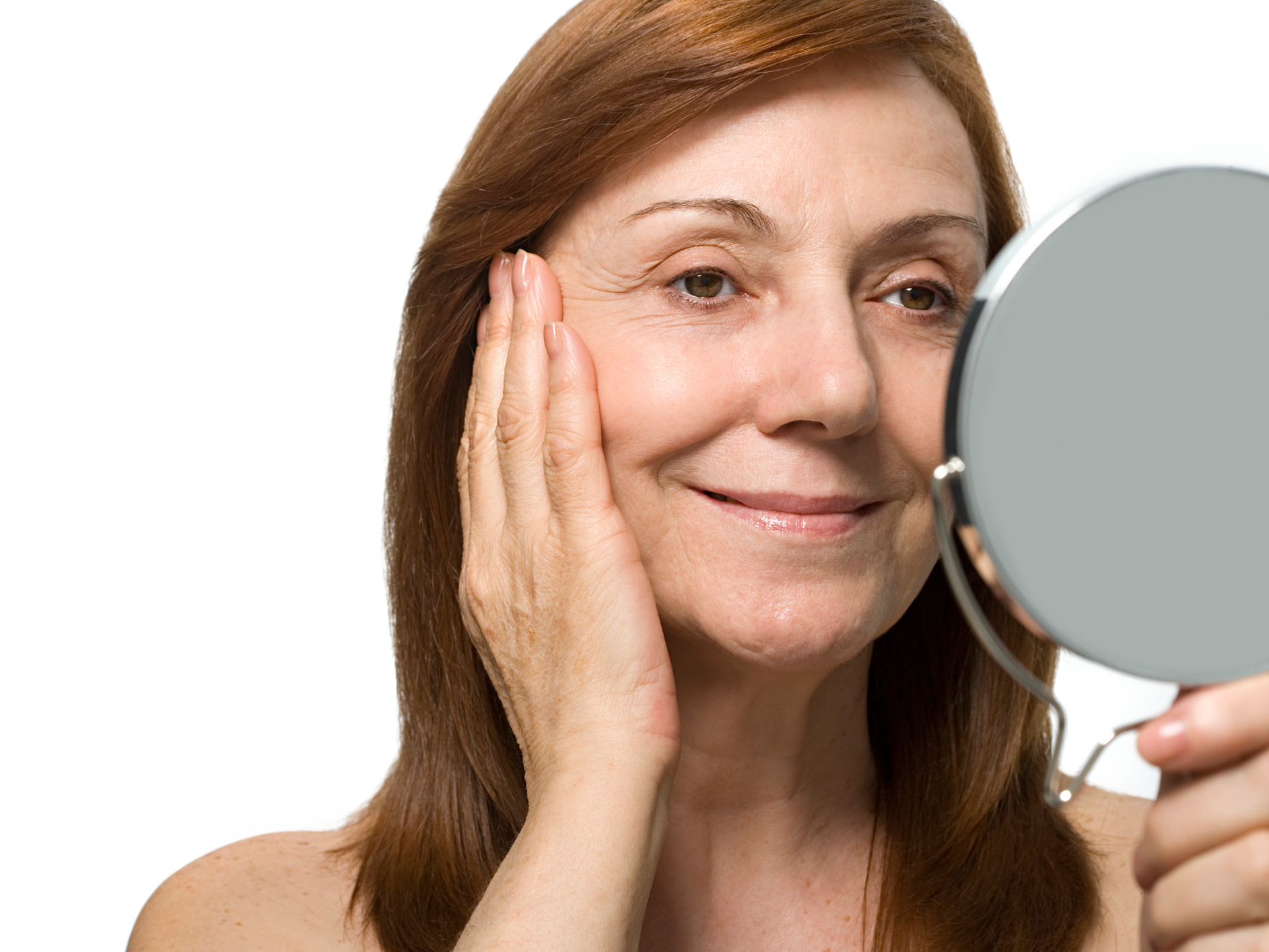Get Easy Health Digest™ in your inbox and don’t miss a thing when you subscribe today. Plus, get the free bonus report, Mother Nature’s Tips, Tricks and Remedies for Cholesterol, Blood Pressure & Blood Sugar as my way of saying welcome to the community!
Is a ‘thread lift’ for you?

Getting a face-lift may not be something you would consider having.
The thought of going under the knife and experiencing weeks of downtime and pain is a serious decision.
But there are so many different procedures shown to be safe and effective these days, with little to no downtime, that women who’d like to do a little something to feel more confident as they age — or look as young as they feel — have more choices than ever.
If you’ve thought about lifting your laugh lines, let me tell you about a very minimally invasive procedure known as a PDO thread lift. It’s been popular in South Korea and Italy for many years and has now made it to the USA.
PDO thread lift basics
When botulinum toxin or dermal filler won’t work, then consider what a PDO thread lift can do.
PDO threads can correct horizontal and vertical forehead wrinkles, lift your brow, smooth out your lower eyelids and creased cheeks, lift sagging cheeks, minimize nasolabial folds and marionette lines, smooth out crow’s feet lines and “smokers’” lines, and redefine your jawline.
Related: What are your choices for sagging skin?
That’s because PDO (polydioxanone) threads are placed into just below our skin and stimulate the following effects to skin:
- Instantly lifts skin via a mechanical effect
- Stimulates fibrin and elastin to produce collagen which improves skin texture, fine lines, and elasticity
- Stimulates new small blood vessel formation that supports skin tissue growth that
- Tightens skin by contracting the underlying fat and muscle
PDO threads are also effective for tightening sagging skin and adding volume in areas other than your face, including the neck, decollete, breasts, abdomen, buttocks, and legs. At a price of $750 to $3,000, the thread lift procedure is the most cost-effective and safe way to get a “facelift.”
Sound intriguing?
What is PDO and how are threads placed?
PDO (polydioxanone) is a biodegradable synthetic polymer thread (suture) inside the lumen of a needle. Threads come in a few different types for different areas and targeted effects: smooth, twisted, and barbed. Threads range from tiny thin to heavy and thick; from ~ 1.5 to 6 inches in length.
Barbed threads have the ability to immediately pull the skin up to 1 cm, in addition to the gradual tightening and volumizing effect they provide.
When implanted into the subcutaneous layer of the skin (at about 5mm deep) these sutures create micro-injuries that stimulate new collagen production, blood vessel growth, and tissue contraction. They remain there until it naturally dissolves over 6-8 months by simple hydrolysis, but they leave behind lasting effects long after the sutures have dissolved for 18-24 months.
Threads are placed with very little discomfort due to topical cream anesthesia that is applied for 20 minutes prior. The downtime is generally none, but you will feel face tightness for 3-5 days after the procedure. There is no scarring and minimal if any bruising. The procedure can last from 15 to 60 minutes depending on the size and complexity.
Expected and adverse effects of a thread lift
You should expect some mild swelling and soreness for 3-5 days after your thread lift procedure. The sensation of mild tightness will last up to 2 weeks.
With smooth and twisted threads, there are very few adverse effects. If they migrate or their placement is somehow right, they can be simply removed at the time of insertion. If they extrude out the skin, they can be pulled taught and cut to keep the end under the skin or simply removed entirely and replaced.
With barbed threads the potential adverse effects are more involved: temporary and mild dimpling of the skin (and it resolves in a few days), facial asymmetry, prolonged pain, prolonged dimpling, and depressions if not placed carefully.
More serious side effects are extremely rare but can include infection, nerve damage, formation of granuloma (a nodule of thick skin where the thread remained protruding), or even (heaven forbid) damage to the salivary ducts.
Before the procedure
- No alcohol, caffeine, or smoking 48 hours pre and post-surgery.
- Take Arnica tablets and apply Arnica cream for 3 days before to 7 days after to help minimize bruising and swelling.
- Avoid Vitamin E, fish oil, green tea, Aspirin, Ibuprofen or other anti-inflammatories for 1 week before the procedure. Blood thinners are a problem.
- If you suffer from cold sores please discuss this with the Doctor. You may need to take anti-viral therapy (e.g. Acyclovir) for 3 days before and after the procedure.
- The sedative Lorazepam (Ativan) can be prescribed by the doctor if you have anxiety about the procedure, to be taken 30 minutes before your procedure. Plan for a driver to bring you and take you home.
After the procedure
- For the first 24 hours please reduce speaking/laughter to minimize facial movements (can be painful); for the first 48 hours gently apply cold compresses on and off to the threaded skin areas. No pressure to the face; use extra pillows and support when sleeping; sleep on your back.
- Do not pull your face down, raise your eyebrows or smile for the first 3 days.
- No drinking with straws as this distorts the facial muscles. Drink plenty of fluids. Avoid very hot drinks.
- Do not use makeup (women) for 2-3 days; avoid shaving your face (men) for 10 days after the procedure (because of involuntary grimacing).
- No heavy or strenuous exercise, just light exercise (e.g. walking) for 14 days.
To aging beautifully and feeling good,
Michael Cutler, M.D.













